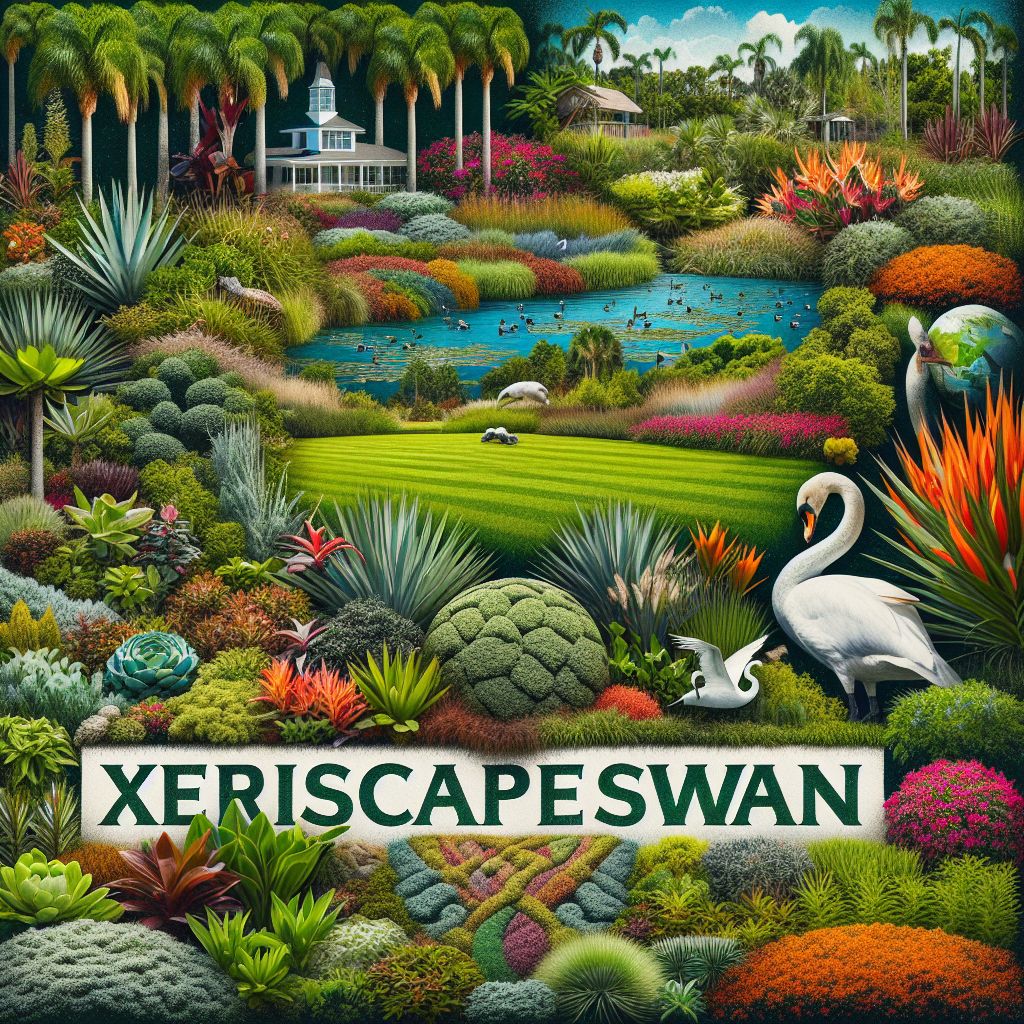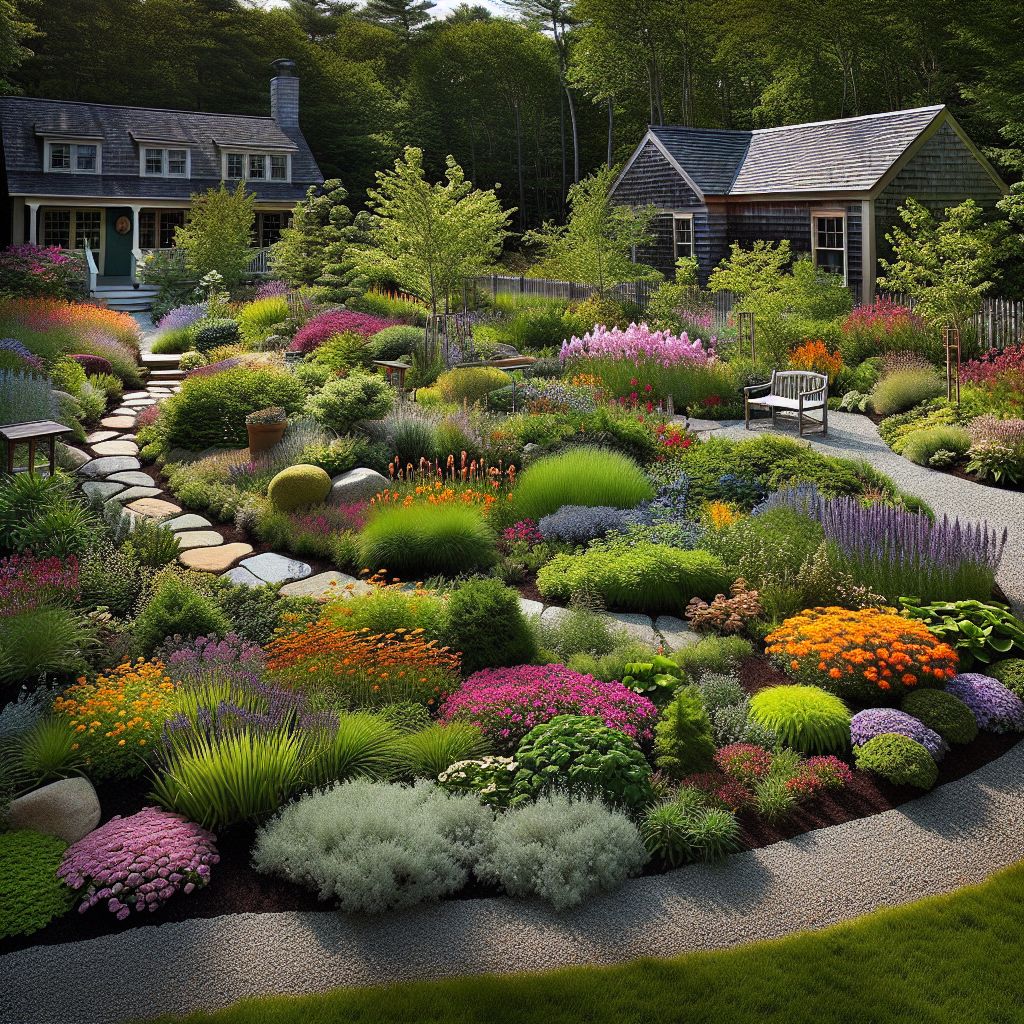
Article-at-a-Glance
- Discover a variety of native Florida plants that offer a low-maintenance alternative to traditional lawns.
- Learn how to create a sustainable, easy-care yard that conserves water and supports local ecosystems.
- Find out which groundcovers and wildflowers thrive in Florida’s climate without needing constant care.
- Get practical tips on designing a garden that balances beauty with resilience and sustainability.
- Understand the benefits and maintenance requirements of Florida’s native plants, including water needs and sunlight specifications.
Why Choose Native Floridian Foliage
Imagine stepping outside to a yard that’s teeming with life, color, and texture, all the while knowing you’re contributing to the environment and saving time on upkeep. That’s the beauty of embracing native Floridian foliage. These plants are not only adapted to thrive in our local climate, but they also provide essential habitats for wildlife and help maintain biodiversity.
Most importantly, native plants have evolved to flourish in Florida’s unique weather patterns, which means they require less water and are more resistant to local pests and diseases. Therefore, they’re an environmentally friendly and cost-effective solution for your landscaping needs.
Perfect Plants for Your Sunshine State Sanctuary
Whether you’re looking to create a serene retreat or a vibrant display of nature’s best, there’s a native plant to suit every corner of your sanctuary. From the shade-loving ferns to the sun-basking wildflowers, you’ll find a variety that not only enhances the aesthetic of your home but also contributes to a healthier planet.
Lawn Alternatives to Save Time and Nature
Traditional lawns, while popular, are not always the best choice for the environment or your free time. The constant mowing, watering, and fertilizing they require can be exhausting and not exactly eco-friendly. Besides that, Florida’s frequent droughts call for a more water-wise approach to landscaping. That’s where lawn alternatives come in.
| Plant | Benefits | Maintenance |
|---|---|---|
| Perennial Peanut | Drought-tolerant, nitrogen-fixing | Minimal mowing and fertilizing |
| Muhly Grass | Attractive plumes, native ornamental | Occasional trimming |
| Beach Sunflower | Year-round blooms, soil stabilizer | Low water needs |
| Frogfruit | Attracts pollinators, fast-growing | Little to no mowing |
| Coontie | Evergreen, provides wildlife food | Practically maintenance-free |
These alternatives are not only easy on the eyes but also on your schedule and the planet. They reduce the need for chemical fertilizers and excessive water use, making your yard a part of the solution to environmental concerns.
Groundcovers That Stay Green Without the Fuss
Groundcovers are the unsung heroes of the easy-care yard. They spread across the soil, creating a living carpet that’s both protective and pretty. In Florida, options like the native Sunshine Mimosa or the versatile Asiatic Jasmine can provide lush, green coverage without the high maintenance of grass.
The Vibrant Versatility of Wildflowers
Wildflowers bring a burst of color and life to any garden. In Florida, the Black-eyed Susan and the Butterfly Weed are not just beautiful; they’re also powerhouses when it comes to attracting pollinators like bees and butterflies. Planting wildflowers is like rolling out a welcome mat for nature’s little helpers.
Water Wise: Irrigation Tips for Drought-Tolerant Vegetation
Let’s talk about water – it’s precious, especially in our sunny state. Drought-tolerant plants are a game-changer for Florida gardens. They’re built to survive with less H2O, but that doesn’t mean they don’t need a drink now and then. The key is infrequent but deep watering, which encourages strong root growth. Consider a drip irrigation system or a soaker hose to deliver water directly to the roots, where it’s needed most.
Longevity and Seasonal Care for Your Garden’s Life Cycle
Your garden is a living, breathing thing. It changes with the seasons, and so should your care for it. In the cooler months, water less, as plants are not as thirsty. But come summer, they’ll need more attention. Mulching is your friend all year round, helping to retain moisture and keep weeds at bay. And remember, the right start with proper planting can make all the difference in your garden’s life cycle.
Pruning is another aspect of maintaining your garden’s longevity. It’s not just about aesthetics; it’s about health. Remove dead or diseased branches to prevent the spread of problems and to encourage new growth. And when it comes to fertilizing, less is often more. Go for slow-release, organic options that feed your plants over time without the risk of burning them.
Seasonal care also means being observant. Keep an eye out for signs of stress in your plants, like wilting or discoloration, and address issues promptly. A garden that’s well-taken care of will reward you with longevity and beauty for years to come.
- Water deeply but infrequently to encourage strong roots.
- Use mulch to retain moisture and control weeds.
- Prune to promote health and new growth.
- Choose slow-release, organic fertilizers.
- Monitor plants for signs of stress and respond quickly.
By following these steps, you’ll ensure that your garden not only survives but thrives, adapting to the seasons and continuing to grow beautifully.

Your Easy-Care Yard’s Essentials
List of Plants Suited for Florida’s Climate
Florida’s climate can be a challenge, but it’s also an opportunity to grow a diverse range of plants. From the sturdy Saw Palmetto to the vibrant Gaillardia, these plants are designed by nature to handle the heat, humidity, and occasional frost. They’re not just survivors; they’re thrivers.
Maintenance Requirements
When you choose plants adapted to Florida’s environment, you’re signing up for less work. No more battling with the lawn mower every weekend. With plants like the native Fakahatchee Grass or the drought-tolerant Blue Porterweed, your maintenance routine becomes a breeze. Just some light pruning and the occasional check-up are all you need.
Water Needs for Each Plant Type
Every plant has its own drink preferences. Some, like the Florida-friendly Coontie, are quite content with what nature provides, while others, such as the moisture-loving Cardinal Flower, might need a bit more hydration. Get to know your plants and their needs, and they’ll get along just fine.
Sunlight Specifications for Optimal Growth
Sunshine is abundant in Florida, and most native plants love it. However, some, like the delicate Beautyberry, prefer a bit of shade during the hottest part of the day. It’s all about finding the right spot in your garden where each plant can soak up just the right amount of rays.
Best Soil Types to Support Local Flora
Soil is the foundation of your garden. Sandy, loamy, or somewhere in between – native plants have preferences. The key is to match your plants with the soil type they like best, or amend your soil to suit their needs. With the right soil, your plants will not just live; they’ll flourish.
Expected Longevity and Durability of Native Plants
One of the joys of native plants is their longevity. With minimal intervention, these plants can become permanent fixtures in your landscape. They’re the ultimate investment in your garden’s future, offering years of beauty and enjoyment.
Price Point: Budgeting for Your Garden
Starting a garden doesn’t have to break the bank. Native plants are often more affordable than their exotic counterparts and cost less over time due to reduced maintenance needs. It usually costs less to buy native seedlings, and you’ll save on water, fertilizer, and pest control in the long run.
Example Plant Profiles for Florida Gardens
| Plant | Description | Estimated Cost |
|---|---|---|
| Sunshine Mimosa | Drought-tolerant, spreading groundcover with pink pom-pom flowers | $5-10 per plant |
| Perennial Peanut | Evergreen, mat-forming groundcover with yellow flowers | $10-15 per flat |
| Beach Sunflower | Spreading, low-growing wildflower with bright yellow blooms | $3-5 per plant |
| Foxtail Fern | Feathery, low-maintenance fern that grows in clumps | $15-25 per plant |
| Agave | Succulent with spiky, architectural leaves that require little water | $10-20 per plant |
References:
University of Florida IFAS Extension. “Groundcovers for Florida Landscapes.”
https://edis.ifas.ufl.edu/publication/EP020
Florida-Friendly Landscaping. “Alternatives to Turf Grass.”
https://ffl.ifas.ufl.edu/homeowners/alternatives.htm
University of Florida IFAS Extension. “Sustainable Landscaping in Florida.”
https://edis.ifas.ufl.edu/publication/EP237
The Sustainable Garden’s Toolbox
Must-Have Tools for your Easy-Care Yard
Even an easy-care yard needs a little help from time to time. A good set of hand pruners, a sturdy shovel, and a reliable watering can or hose are the basics. For those opting for mulch, a pitchfork or a mulch scoop will be handy. And don’t forget a good pair of gardening gloves to protect your hands.
With these tools and the right plants, you’re well on your way to creating a Florida easy-care yard that’s as good for the earth as it is for your peace of mind.
Cap Off Your Shovel
As we wrap up our exploration of Florida’s easy-care yards, it’s time to cap off our shovels and take pride in the sustainable sanctuaries we’ve created. These native plant landscapes not only ease the burden of maintenance but also become a personal contribution to the conservation of our natural resources.
The Joy of Low-Maintenance Gardening
Low-maintenance gardening is a joy, not a chore. It allows you more time to enjoy the fruits of your labor – observing the wildlife, smelling the flowers, and basking in the tranquility of your own slice of Florida’s natural beauty. Remember, the goal is to work with nature, not against it.
Make Your Green Space a Haven for Wildlife
By choosing the right plants and creating diverse habitats, your garden can become a haven for birds, butterflies, and beneficial insects. This not only adds to the charm of your yard but also plays a crucial role in supporting local ecosystems and the greater web of life.

Frequently Asked Questions (FAQ)
What are the Best Shade-Tolerant Plants for Florida Yards?
Shade-tolerant plants that thrive in Florida include ferns like the Southern Maidenhair and plants like the Caladium, which adds a splash of color with its heart-shaped leaves. These varieties can bring life to the cooler, shaded areas of your garden.
How Often Should I Water My Native Plants?
Native plants are generally drought-tolerant, but during the establishment period, they’ll need consistent watering. Once established, they’ll require less water – typically only during extended dry spells. Always water deeply to encourage deep root growth.
Can I Mix Native Plants with Non-Natives in my Garden?
Yes, you can mix native and non-native plants, but it’s important to choose non-natives that are not invasive and that complement the growing conditions and needs of your native plants. This way, you can maintain the ecological balance and health of your garden.
What Groundcovers Can Replace My Lawn in Full Sun?
For areas that receive full sun, consider groundcovers like Dwarf St. Augustine or Seville Grass. These alternatives handle the sun well and require less water and maintenance than traditional lawns.
Are There Deer-Resistant Plants for Florida Yards?
Deer-resistant plants can be a necessity in some areas. Plants like Lantana, Salvia, and Rosemary tend to be less palatable to deer and can help keep your garden intact.




Leave a Reply